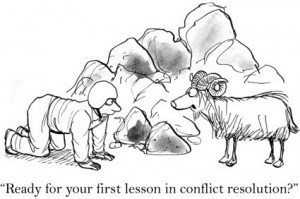In conflict resolution the ability to express ourselves without blaming or accusing another person of something is the first part of being able to more quickly come to a resolution. The second part is to be able to listen closely. In any conversation that requires clear communication, being able to express ourselves and listen to the expression of others. This can be difficult because really there are 6 different identities involved.
- Person A the real self
- Person B the real self
- Person A – the way they see themselves
- Person B – the way they see themselves
- Person A – the way they see Person B
- Person B – the way they see Person A
The most important of these 6 selves is how you are seen by the other person. If we are to come to a resolution of any conflict, we must first be able to listen to the other party and understand what they see in us, how they are hearing our messages.In regard to impact the words we say are not as important as other factors. This is how it breaks down:
- Only 7-10% of what is heard by the other person is the actual content of what we are saying.
- 33-40% is the impact of our voice, how fast we are talking, the tone of our voice, the pitch and the inflection of our voice.
- 50-60 % of what is heard is done with non-verbals, facial expressions, gestures and other body language.
It is easy to see why we may feel that we are not understood. The two most important factors when we are listening or speaking is the way the other person perceives us by our verbal and non verbal impact.




